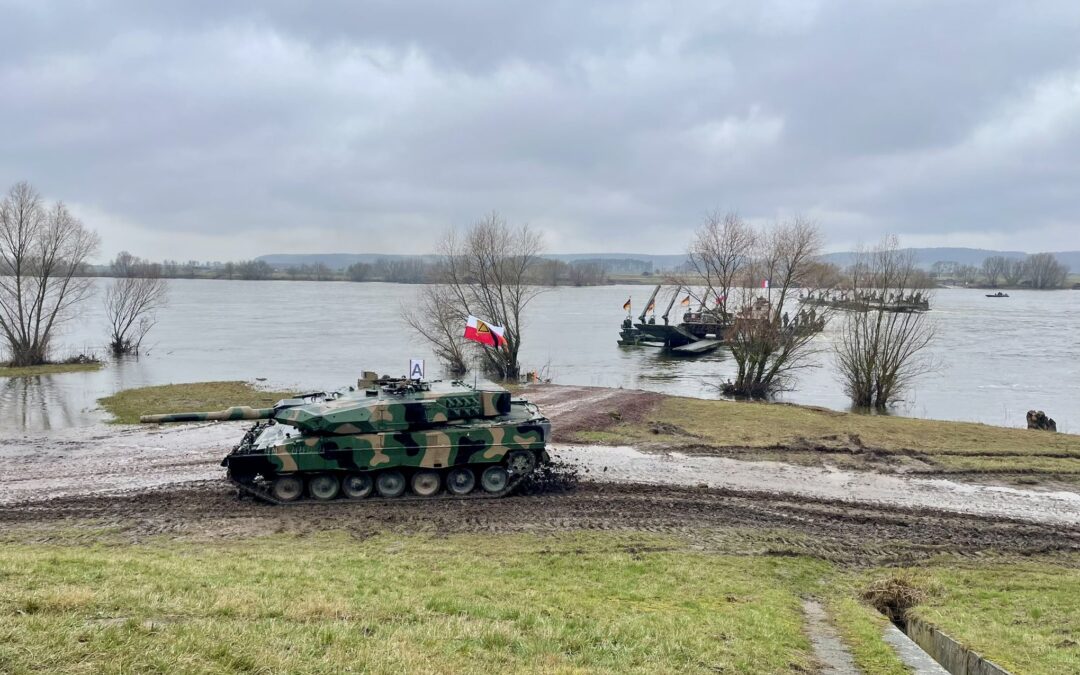Around 20,000 troops from nine countries are taking part in NATO exercises in northern Poland to test the alliance’s deterrence and defence capabilities, including around the Suwałki Gap, a strategic chokepoint between Poland, Lithuania, Belarus and Russia.
The drill, dubbed Dragon 24, is part of the larger Steadfast Defender 24 exercises, NATO’s largest since the Cold War, involving a total of 90,000 troops from all 31 NATO member states and incoming member Sweden.
🛡️ 20,000 troops from 9 Allies are exercising together in 🇵🇱 Poland, showing NATO is ready and able to protect our people and defend every inch of Allied territory.
Learn more about the defensive exercise, part of the #SteadfastDefender24 series ⤵️pic.twitter.com/mSDww5Jy3z
— NATO (@NATO) March 4, 2024
The Dragon 24 exercises, which began last week, involve 20,000 soldiers and 3,500 equipment units from Poland, the US, France, the UK, Spain, Germany, Slovenia, Turkey and Lithuania and encompass operations on land, at sea and in the air, as well as in cyberspace.
Poland’s 11th Lubusz Armoured Cavalry Division has been assigned as the main force to take part in the exercise, but special forces, air force, navy and territorial defence soldiers are also involved. NATO’s enhanced Forward Presence Battlegroup Poland is also taking part.
The forces involved are practising crossing roads, bridges and rivers to reach the Suwałki Gap, which lies on the Polish-Lithuania border and is located between Belarus and the Russian exclave of Kaliningrad.
The Polish defence ministry underlined last week that both “Dragon 24 and Steadfast Defender 24 are defensive exercises and are not directed against any country, but are a demonstration of the ability to counter the aggressive policy and provocative activity of the Russian Federation”.
Yesterday saw the beginning of one key element of the exercise: the crossing of armoured troops over the Vistula, Poland’s largest river, which runs through the centre of the country.
A total of 3,500 personnel and 1,000 equipment units are taking part in the crossing from the village of Opalenie to Korzeniowo, which will last three days.
Today, the operation was visited by Poland’s president, Andrzej Duda, and defence minister, Władysław Kosiniak-Kamysz, as well as Luthuania’s president, Gitanas Nausėda.
W ćwiczeniu #Dragon24 zaangażowane jest łącznie ok. 20 000 żołnierzy i 3 500 jednostek sprzętu z 9 państw #NATO, w tym około 15 000 żołnierzy #WojskoPolskie 🇵🇱 pic.twitter.com/yPSRccT0dX
— Ministerstwo Obrony Narodowej 🇵🇱 (@MON_GOV_PL) March 5, 2024
“These are our joint exercises to strengthen the security of the entire eastern flank of NATO, not only Poland but also the Baltic States,” said Duda. “Poland is ready at any time to fulfil our obligations under Article 5, that is, collective defence.”
“We agree that Russia remains the main threat to the alliance as a whole, which is why we must focus on strengthening NATO’s eastern flank,” added Nausėda.
Planning for the Steadfast Defender 24 exercises began in 2022, after Russia launched its full-scale invasion of Ukraine.
That attack also prompted Poland to embark on a military procurement spree to modernise and expand its armed forces. Last year it spent the equivalent of 3.9% of GDP on defence, the highest relative amount in NATO.
W Polsce, w ramach manewrów NATO #STEADFASTDEFENDER24, trwają właśnie ćwiczenia #Dragon24. To 20 tys. żołnierzy z 🇵🇱🇱🇹🇺🇸🇬🇧🇩🇪🇫🇷🇪🇸🇸🇰🇹🇷 i 3500 jednostek sprzętu. Sprawdzają się na lądzie i morzu, w powietrzu i cyberprzestrzeni. pic.twitter.com/DOK7OtoOvb
— Kancelaria Prezydenta (@prezydentpl) March 5, 2024

Notes from Poland is run by a small editorial team and published by an independent, non-profit foundation that is funded through donations from our readers. We cannot do what we do without your support.
Main image credit: MON/X

Alicja Ptak is senior editor at Notes from Poland and a multimedia journalist. She previously worked for Reuters.



















